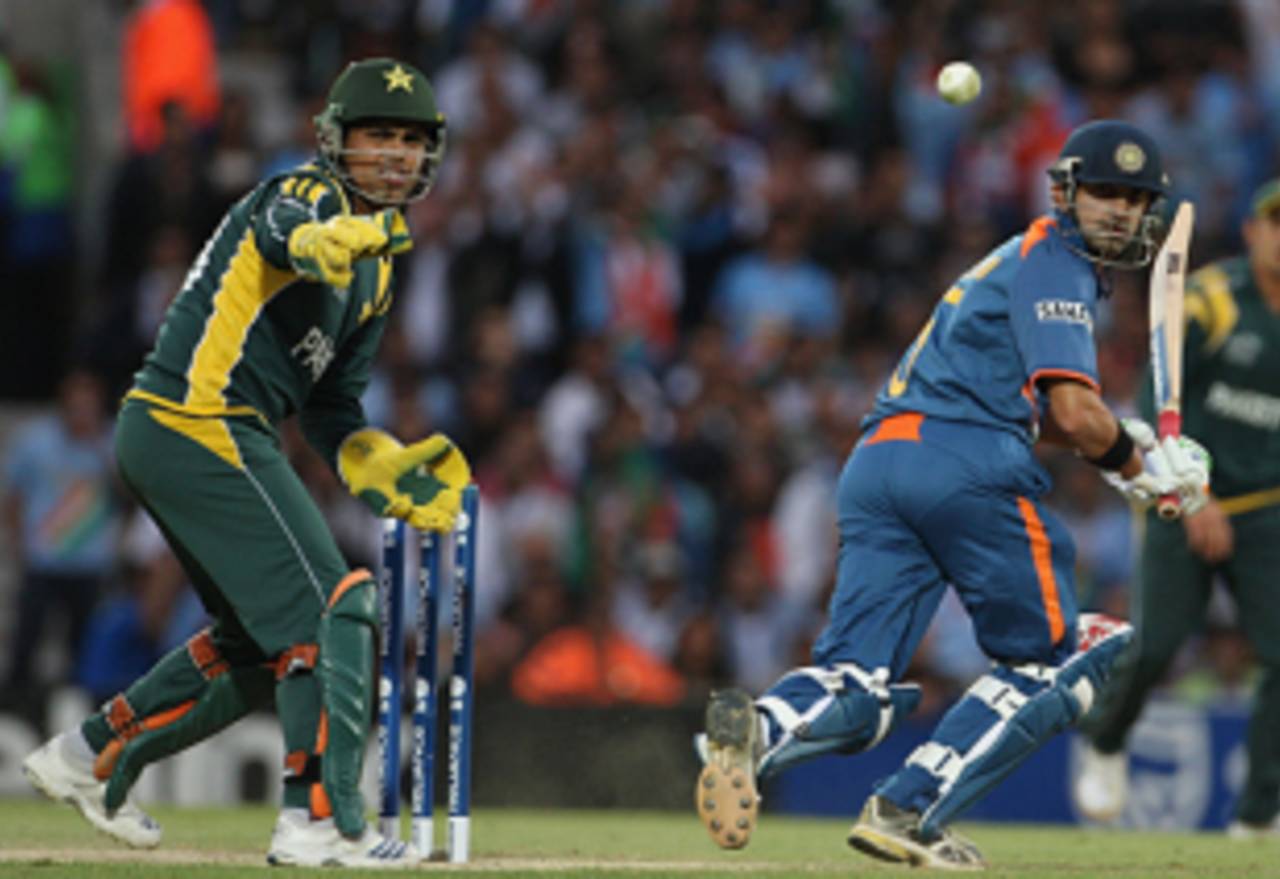And so it begins, again
After a period of overkill in the middle of this decade, cricket's most fraught rivalry has an edge again. Or does it?
Sambit Bal
25-Sep-2009

India v Pakistan: a bit more than cricket always • Getty Images
Oddly enough, in all these years of writing about cricket, I have never watched a 50-over match between India and Pakistan at a cricket ground. I have watched Tests in Lahore, Bangalore and Chennai, and the World Twenty20 final in Johannesburg, but never an ODI, the genre that has engendered much of the passion between the fans of these two countries, where cricket has always been close to the national identity. I was at the 2007 World Cup, but India and Pakistan were in different groups, and in any case both the teams had gone home in disgrace by the time I landed.
So here it is then, it's that time again when cricket acquires an edgy subtext. For a long while this decade, familiarity threatened to breed tedium. But India and Pakistan haven't played each other for more than year - 14 months, 22 days to be exact, and the world has changed quite a bit in between, so inevitably, though not ideally, it will be a bit more than cricket at SuperSport Park in Centurion on September 26.
Without the friction, the edge, and occasionally even the mean spirit that great rivalries bring, sport will be sterile. India and Pakistan provide all these on a cricket field, but with them, cricket has managed to not merely remain a sport. Sometimes it has been a salve, sometimes a weapon; it has enabled bonding and it has divided; at times it has been a bridge, at others a vehicle for ugly chauvinism; and governments have used it as both a handshake as well a show of fists. Consequently, cricket has provided both India and Pakistan with some beautiful and uplifting moments, as well some noxious ones.
The Ashes, cricket's original big rivalry, and the more traditional, begins and ends on the playing field. Indian and Pakistani cricketers have rarely had that simple luxury, because for their nations the cricket rivalry has always been a small, but profoundly symbolic, part of a bigger, far more complex rivalry. And for the major part of their cricket history neither the players nor the fans have managed to escape this. It has been a burden.
It seemed on India's tour of Pakistan in 2004 that a breakthrough had been made. No one who went on that tour came back untouched by the swell of goodwill and fellow-feeling, and it carried on when Pakistan toured India the following year. However, as the cricket boards, which had always been bound by mutual interest, worked overtime to milk the situation, things began to change.
The teams started playing every year. India went back for a full series in 2006; the same year the two sides played in Abu Dhabi and Glasgow; Pakistan toured for a full series in 2007; in 2008 they took part in the forgettable Kitply Cup, also featuring Bangladesh, in Dhaka, and then in the Asia Cup in Pakistan.
From a pure cricket point of view, it was overkill. It took away the anticipation and the intensity. But from a larger perspective, it also took away the heat and emotional charge, and that was not a bad thing at all. Since they were always playing, wins and losses no no longer felt like life and death. It felt somewhat dull, but it also felt sane.
The Ashes, cricket's original big rivalry, and the more traditional, begins and ends on the playing field. Indian and Pakistani cricketers have rarely had that simple luxury, because for their nations the cricket rivalry has always been a small, but profoundly symbolic, part of a bigger, far more complex rivalry
It's hard to imagine the players wouldn't have found that liberating. After all, no one takes to a game to avenge a nation's honour - though from Indian and Pakistani cricketers, their fans had come to expect nothing less. So even though many of the players were friends off the field, often sharing meals in restaurants and at homes, and schoolboy jokes, they were expected to growl and snarl at each other on the cricket field.
Once the pressure eased, they could allow themselves to be themselves. It wasn't a coincidence that no captain lost his job on account of a loss to the old enemy in this period. And, inevitably, when the Indian Premier League came, Pakistanis constituted the second largest pool of foreign players. They could have been the largest if the Indian Cricket League hadn't appropriated a big lot already.
And then, with the Mumbai terror attack, the landscape changed again. It was clear from the moment it was known that those who burned and killed in Mumbai had come from Pakistan that cricket was bound be affected, and so it was. The first diplomatic response from the Indian government was to cancel the impending cricket tour to Pakistan. It was no more than symbolic, but it was most convenient.
So on Saturday in Centurion there will be yet another resumption of cricket's most fraught rivalry. The governments are talking again, and somehow the build-up has been far less frenzied for this match. In fact, it's been almost muted. Perhaps that is because it's only a one-off, and at a neutral venue, and the Champions Trophy has never been such a big deal. Or is it a sign?
I am looking forward to my first one-day match between India and Pakistan. I am hoping it turns out to be as good as the last one these teams played at this ground. It will be naïve to expect cricket to sort out our countries' problems, but in understanding the meaning of sport there can be a beginning.
Sambit Bal is the editor of Cricinfo